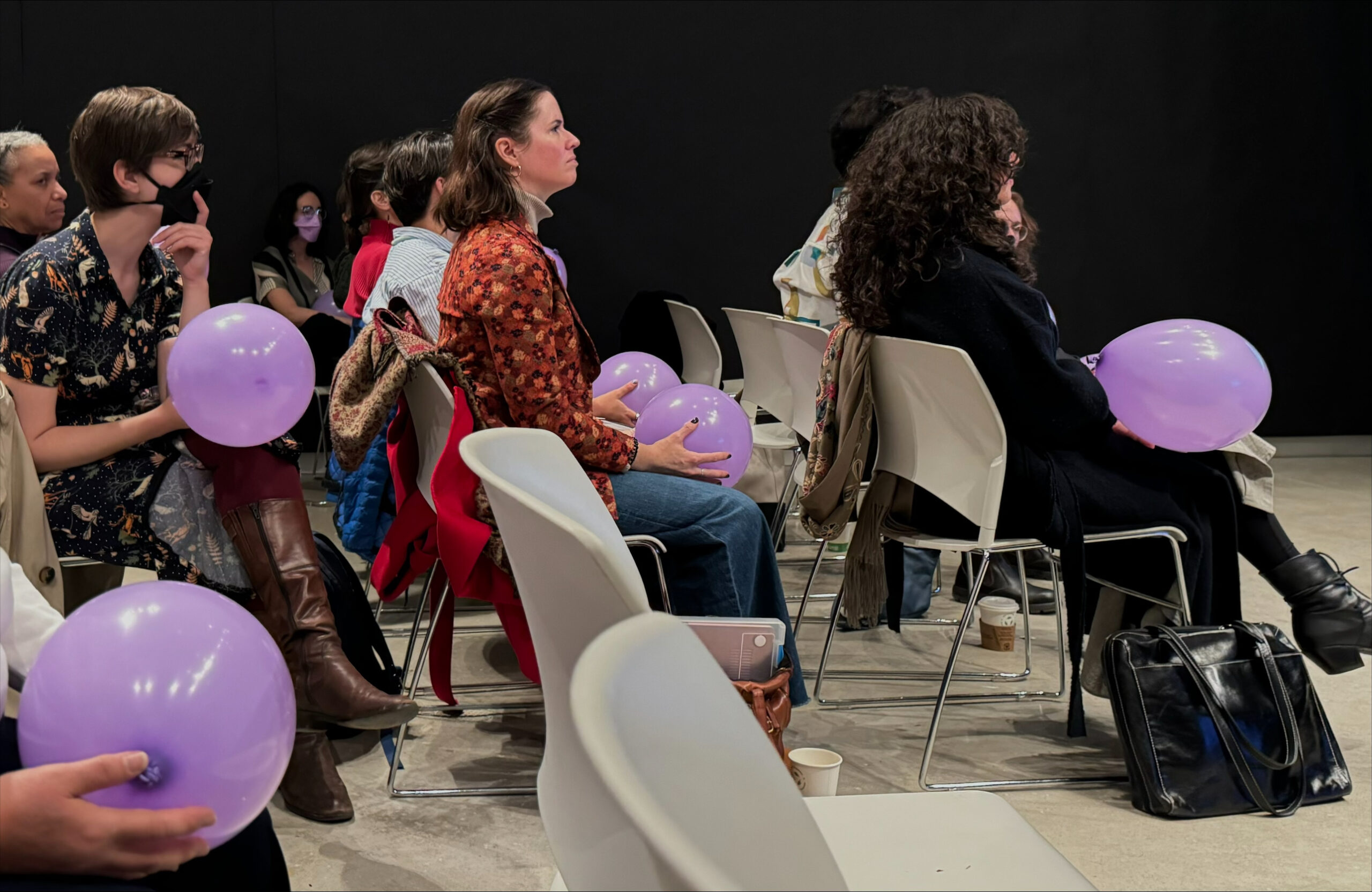An intersection of art and learning
The Blackwood Gallery brings together artists to create a space that embraces our shared responsibility for making livable worlds for all.
The Whole World in Our Hands, a semester-long exhibition hosted by the Blackwood Gallery, held a four-session forum on November 13, 2024, with multidisciplinary artists and researchers engaging with themes of community, culture, and resilience.
I was able to attend two out of the four sessions. By reenacting the motions common in video games today, contributor Shay Erlich communicated the realities of being disabled alongside Deaf artist and curator Maryam Hafizirad, who explained the importance of Deaf View Image Art (De’VIA) through personal stories. Together, these two artists developed a complimentary dialogue about the existing gaps and tensions of our exclusionary systems and offered ways of creating a new world built on disability justice.
Shay Erlich guided the third session of the forum, talking about how their artistic production, such as manual wheelchair dance and video game design, is driven by their desire to share the complex lives of people with physical disabilities. As a wheelchair user, Shay focused on their frustrations with the built environment: more specifically, how spaces such as university campuses are not designed through a “lens of mobility.”
In their current work, Shay explores the “hybrid embodiment between technology and movement” through video games. Whether standing or sitting, the audience, including myself, acted out their versions of these common video game movements: grow, spin, swing, stomp, shoot (or point), dash, and pull. To put it briefly, this was quite enlightening. These actions initially seemed easy to act out, but they quickly became uncomfortable. Movements that were once considered typical now felt novel. It reminded me of what Shay had said earlier in the session when talking about their transition into a wheelchair: “What my mind wanted to do and what my body couldn’t.”
In the fourth session, Maryam Hafizirad (signing Deaf person) and a music researcher at the Faculty of Music at the University of Toronto, Ely Lyonblum (non-signing person), discussed how their backgrounds had impacted their collaborative work. They defined De’ VIA art as “Signed Music”, which includes performance, painting, and sculpture work that conveys the experiences of those in the Deaf community.
Accompanying this dialogue was a poem written and performed by Maryam with sound directed by Ely. Maryam’s anecdote shared the experience of being Deaf in an audist world. She recalled her time in Iran in contrast with her move to Canada, expressing the importance of community and acceptance. During this performance, we, the audience, held purple latex balloons to feel the vibrations of Ely’s auditory version of Maryam’s poem.
After the sessions, Associate Professor in the School of Disability Studies at Toronto Metropolitan University, Eliza Chandler, reflected on the purpose of this forum in her closing response, recognizing that “the ways that we don’t know and know the world of disability” are important for our collective future.
Attending this forum as an able-bodied person was eye-opening. Through the artist’s practices, we were made acutely aware of the ableist culture and built environment that we all have to navigate.
The Whole World in Our Hands also includes five lightboxes, a video, and sound installation around campus and an upcoming film screening on December 5 at the CAMH Auditorium in Downtown Toronto. If you see the installations around campus, keep in mind the ideas I mentioned; it may change your perspective as it did mine.

